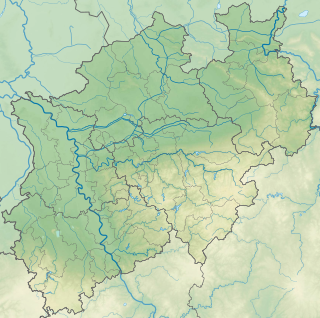Burscheider loess terraces
| Burscheider loess terraces | |||
|---|---|---|---|
| Systematics according to | Handbook of the natural spatial structure of Germany | ||
| Greater region 1st order | Low mountain range threshold | ||
| Greater region 2nd order | Rhenish Slate Mountains | ||
| Main unit group | 33 → Süderbergland |
||
| About main unit | 338 → Bergische plateaus |
||
| 4th order region (main unit) |
338.0 → Mittelberg plateau |
||
| Natural space |
338.00 → Burscheider loess terraces |
||
| Geographical location | |||
| Coordinates | 51 ° 5 '8 " N , 7 ° 6' 49" E | ||
|
|||
| local community | Leichlingen , Burscheid , Leverkusen , Odenthal | ||
| state | North Rhine-Westphalia | ||
| Country | Germany | ||
The Burscheider loess terraces are, according to the manual of the natural spatial structure of Germany, a natural spatial unit with the number 338.00 and belong to the superordinate natural spatial main unit 338.0 ( Mittelberg plateau ). They include the eastern Leichlingen hinterland to Witzhelden , the east of Leverkusen ( Bergisch Neukirchen , Lützenkirchen , Fettehenne , Steinbüchel and Mathildenhof ), the part of Odenthal north of the Dhünn and the Burscheider urban area.
The loess terraces consist of terraces rising from 100 to 200 m to the east , some of which are clearly visible. In some cases, however, the terrain is gradually rising and gaining height without any noticeable gradation. They are part of the main Rhine terraces and the older Rhine terraces. Riedel terraces run from east to west , which are structured by deep, steep-walled brook valleys of the Schmerbach , Weltersbach , Vierschelsbach , Murbach , Ölbach , Wiembach and Leimbach brooks flowing in the same direction . In the north, separated from the Lower Wuppertal (order number 338.04), the Ohligser Terrassenriedel (order number 338.01) join.
Loamy loess soils cover the natural area. On the slopes of the valley there are Devonian greywacke , slate and sandstone layers . Climatically , the Burscheider loess terraces differ from the highlands in the east. They are significantly drier, warmer and less rainfall (less than 1000 mm annual rainfall ). The climate favors fruit growing.
